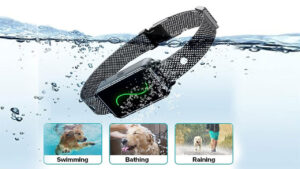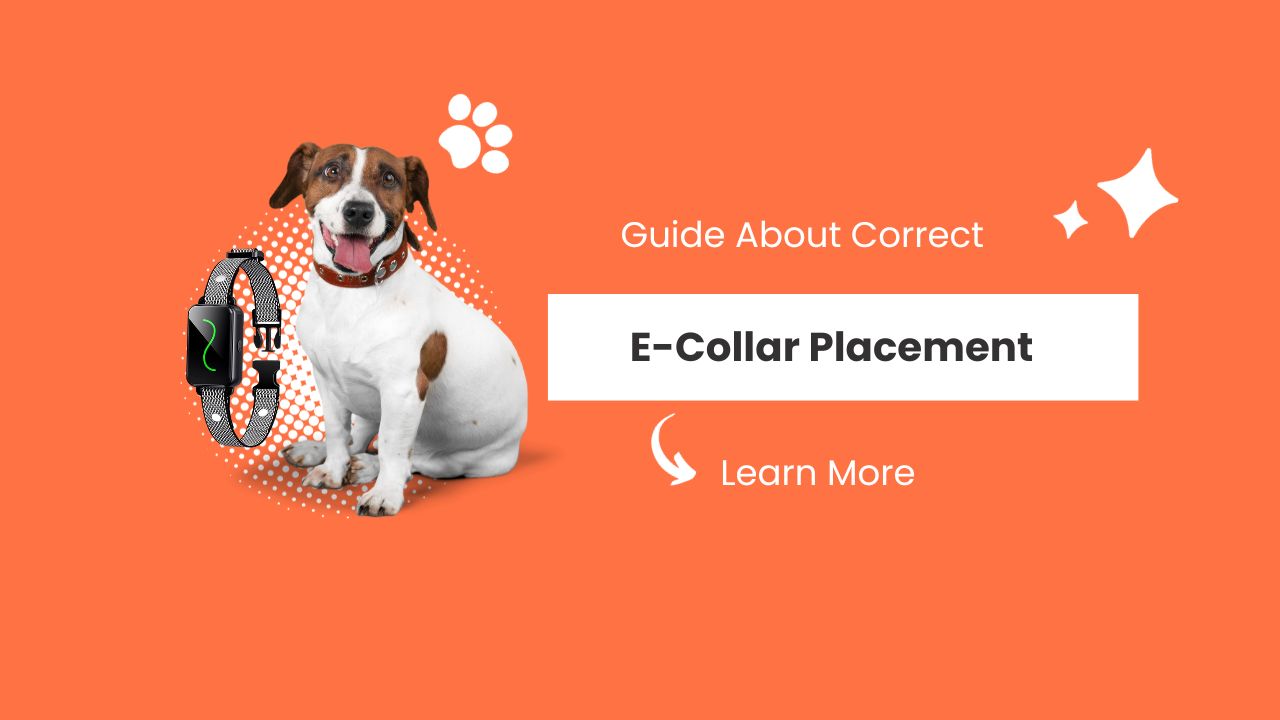Imagine you have a loyal four-legged companion, a furry friend who brings boundless joy to your life. You want nothing but the best for them, including their safety and well-being.
If you’ve ever considered using an electronic collar (e-collar) as a training tool or for managing their behavior, you’ve embarked on a journey to provide the best care possible.
However, the effectiveness and ethical use of e-collars hinge on one crucial factor which is correct e-collar placement.
In this exploration, we’ll dive into the world of Correct E-Collar Placement, Whether you’re a seasoned pet owner or new to the concept of e-collars, this discussion will provide insights into ensuring your furry friend’s comfort and safety while utilizing this training tool.
Join us as we embark on this enlightening journey to discover the correct e-collar placement – a small but significant step toward improving your pet’s life and strengthening the special connection you both share.
Why Correct E-Collar Placement Matters
Before we dive into the specifics of e-collar placement, let’s understand why it’s essential. The location of the e-collar on your dog’s neck can significantly impact its effectiveness and your pet’s comfort.
Correct placement ensures that the electrical stimulation provided by the collar reaches the desired areas without causing unnecessary discomfort or harm.
Incorrect placement, on the other hand, can lead to ineffective training, adverse behavioral reactions, and potential physical injuries.
Step-By-Step Guide to Proper E-Collar Placement
Now that we understand the importance of correct e-collar placement, let’s go through a step-by-step process to ensure you do it right:
- Measure Your Dog’s Neck: Use a flexible tape measure or a piece of string to measure the circumference of your dog’s neck. Make sure the tape or string is snug but not too tight. Note down the measurement to choose the correct collar size.
- Choose the Right Size: E-collars come in different sizes, so select one that matches your dog’s neck measurement. It’s crucial not to go too small or too big, as an ill-fitting collar may slide around or cause discomfort.
- Position the E-Collar: Start by placing the e-collar high on your dog’s neck, just below the jawline and behind the ears. This is the optimal position to ensure effective communication with your pet. The collar should be snug but not overly tight or loose.
- Contact Points: The contact points of the e-collar, which deliver the electrical stimulation, should be in direct contact with your dog’s skin. Ensure that the area around the contact points is free from any hair, dirt, or debris that could hinder proper contact.
- Check for Clearance: Make sure there is at least a finger’s width of clearance between the e-collar and your dog’s skin. This allows for comfortable wear and prevents potential skin irritations or pressure sores.
- Secure the Collar: Fasten the e-collar securely around your dog’s neck, ensuring it is snug but not constricting. You should be able to fit two fingers comfortably between the collar and your dog’s neck.

Tips for Comfortable and Effective Training
Now that you know how to place the e-collar correctly, here are some additional tips to enhance your dog’s comfort and the effectiveness of the training:
- Get Professional Guidance: If you’re new to e-collar training, it’s beneficial to seek guidance from a professional dog trainer who specializes in using electronic collars. They can teach you the correct techniques and help you understand your dog’s individual needs.
- Start with Low Stimulation Levels: When you begin using an e-collar, always start with the lowest stimulation level. Gradually increase the intensity only if necessary, after observing your dog’s reaction and consulting with a professional trainer.
- Regularly Check the Fit: It’s crucial to regularly check the fit of the e-collar, especially as your dog grows or loses weight. Reassess the fit, ensuring it remains snug but comfortable, without causing any skin irritation or mobility issues.
- Monitor Your Dog’s Reaction: Pay close attention to your dog’s reaction when wearing the e-collar. Look for signs of discomfort, anxiety, or any adverse behavioral changes. If you notice any negative reactions, consult your trainer and consider adjusting the fit or training techniques.
- Use Positive Reinforcement: Remember, an e-collar is just one tool in the training process. Combine its use with positive reinforcement techniques, such as treats, praise, or playtime, to encourage desired behaviors. This will help build a positive association with the e-collar and reinforce your dog’s understanding of the training.
In Conclusion
Correct e-collar placement is a crucial aspect of using this training tool effectively and ensuring your dog’s comfort. By following the step-by-step guide provided in this blog post and considering the additional tips, you can confidently use an correct e-collar placement for training purposes.
Remember, always prioritize your dog’s well-being and seek professional guidance when needed.
Note: The information provided in this blog post is for educational purposes only. Always consult with a professional dog trainer or veterinarian before implementing any training methods or using e-collars on your pet.

